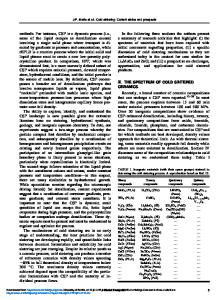Plastome engineering in vegetable crops: current status and future prospects
- PDF / 852,080 Bytes
- 14 Pages / 595.276 x 790.866 pts Page_size
- 58 Downloads / 570 Views
REVIEW
Plastome engineering in vegetable crops: current status and future prospects Rajesh Yarra1 Received: 17 January 2020 / Accepted: 28 August 2020 © Springer Nature B.V. 2020
Abstract Plastome (plastid genome) engineering has grown up and got smarter for the transgene expression. Plastid transformation has profound benefits over nuclear transformation, includes a higher level of transgene expression, integration via homologous recombination, transgene containment, lack of gene silencing, and position effect. Substantial and fruitful progress has been achieved in plastome engineering of vegetable crops through the use of improved regeneration/selection procedures, plastid transformation vectors with efficient promoters, and 3/, 5/regulatory sequences. Plastid transformation technology developed for vegetable crops being used as a platform for the production of industrially important proteins and some of the genes of agronomic importance has been stably integrated and expressed in plastome. Although great progress has been accomplished in the plastid transformation of vegetable crops, still it is restricted to few species because of the unavailability of whole plastome sequencing. In this review, the author focus on the technology, progress, and advancements in plastid transformation of vegetable plants such as lettuce, tomato, potato, cabbage, cauliflower, eggplant, carrot, soybean, and bitter melon are reviewed. The conclusions, future prospects, and expansion of plastid transformation technology to other vegetable crops for genetic improvement and production of edible vaccines are proposed. Keywords Homoplasmy · Plastome · Intergenic region · 3/, 5/regulatory sequences
Introduction The world’s population is projected to reach more than 9 billion people by the year 2050 and food supply, becoming increasingly unstable. More efficient agricultural production is needed to exacerbate this problem as the available land is victimized to its potential. There is an imperative need to explore novel technologies to increase and stabilize food production in response to rising population pressures. Plant genetic transformation is a central research tool for crop improvement to achieve sustained food production. Nuclear genetic transformation has become a common method for the incorporation of new and desired genes into plants; however, it projected the risk of causing gene containment to other crops and wild plants. Alternatively, plastid transformation is an effective tool to achieve plants with desired properties and might be a potential solution to overcome these * Rajesh Yarra [email protected] 1
Department of Agronomy, University of Florida, IFAS, Gainesville, FL 32611, USA
problems, since maternal inheritance of chloroplast genome is typical for the majority of crop plants [1–3]. Plant plastids (chloroplasts) are double-membrane organelles, contain their genome (plastome) originated more than 1.5 billion years ago when a photosynthetic bacterium was engulfed by ancient eukaryote [4, 5]. They are
Data Loading...











